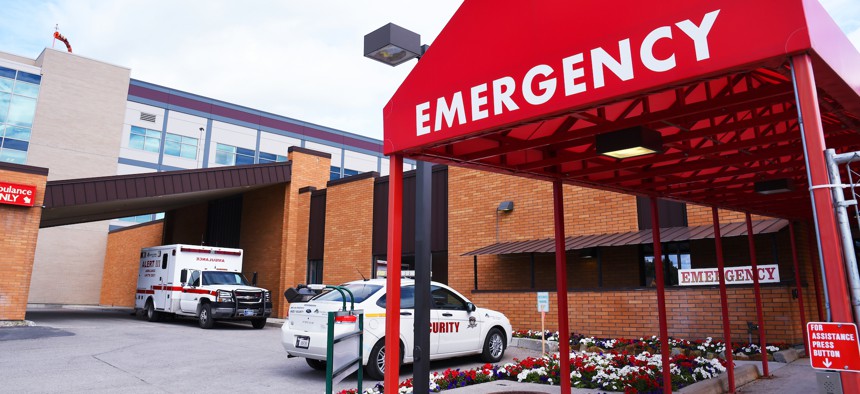Local Health Officials Decry House Plan to Gut Disease Prevention Fund to Pay for CHIP

The Kalispell Regional Medical Center in Montana. Shutterstock
The House plan to reauthorize CHIP would cut the Affordable Care Act’s Public Health and Prevention Fund by 75 percent over the next decade.
WASHINGTON — U.S. House lawmakers are set to vote Friday on a plan to extend funding for the Children’s Health Insurance Program, which expired at the end of September. That bill, the Championing Healthy Kids Act, passed through the Energy and Commerce Committee earlier this month with no votes from Democrats and has been met with vocal opposition from the public health community.
Health officials do not object to the substance of the proposal which came together after the authorization for CHIP had already elapsed and would fund the program for five years. Rather, they object to how the bill will be paid for. According to calculations by the Congressional Budget Office, offsets would cut funding to the Affordable Care Act’s Public Health and Prevention Fund by as much as $10.5 billion over the next decade.
That comes out to a 75 percent budget reduction for a funding stream that constitutes the single largest federal source of money for disease prevention.
In a statement, the National Association of County and City Health Officials, which represents nearly 3,000 health agencies, called the potential cut to the PPHF “devastating” to the nation’s local health departments.
“While the Championing Healthy Kids Act supports important healthcare programs, it comes at the expense of core public health initiatives, including immunization, diabetes, and heart disease prevention at the state and local levels,” said Laura Hanen the interim executive director and chief of government affairs for NACCHO.
“The near elimination of the Prevention and Public Health Fund would result in deep cuts to local health departments’ activities, including responding to infectious disease outbreaks including Hepatitis A, mumps, and measles, as well as recovering from hurricanes and forest fires. There has to be a better solution than shifting scarce resources from one safety-net program to another. Our communities deserve better,” Hanen added.
Local officials aren’t the only ones speaking out against the offsets built into the Republican-backed CHIP proposal. The American Academy of Family Physicians issued a statement Tuesday that at the same time welcomed the reauthorization of the CHIP while expressing deep concern the bill “would gut public health and prevention programs” and “undermine many essential public health priorities.”
Likewise, the American Public Health Association strongly urged Congress to come up with a way to reauthorize CHIP that would leave the PHPF intact.
“Funding these programs at the expense of other public health programs is counterproductive and short-sighted. Funding for public health is essential for preventing illness and injury, and for keeping children and families healthy,” read the APHA’s statement.
The Senate Finance Committee also approved a bipartisan five-year extension to CHIP earlier this month. The offsets for that bill have not yet been announced.
Here are a few of the programs that the Prevention and Public Health Fund supports:
- The Section 317 Vaccination Program makes up the largest chunk of PPHF allocations. In fiscal year 2016, the fund made more than $324 million available for the federal government to purchase vaccinations for children, adolescents and adults. Funding from the PPHF makes up half of the total budget for the immunization program. Given the fact that vaccination rates are already decreasing in certain states, cuts to this program are particularly concerning.
- The PPHF remains one of the major sources of funding for lead poisoning prevention. In fiscal year 2016, the PPHF allocated $17 million to this initiative that’s been shown to be cost-effective. It’s been shown that every $1 spent on reducing lead poisoning hazards saves at least $17 in direct and indirect costs.
- Preventative Health and Health Services Block Grants, which accounted for $160 million of the PPHF in fiscal year 2016, are especially vital to local health departments. Much of the federal money that reaches the local levels comes tied to specific diseases or initiatives, while these block grants allow for more flexibility which in makes it possible for local officials to fund programs tailored to the needs of their communities.
- Money from the PPHF makes up as much as 80 percent of the funding for education and research on preventing heart disease, which remains the number one cause of death in this country.
- Twelve percent of the Centers for Disease Control and Prevention’s budget.
Quinn Libson is a Staff Correspondent for Government Executive’s Route Fifty based in Washington, D.C.
NEXT STORY: Searching for Solutions After 14 Overdoses and One Death in a Library






